Are you planning a trip and looking for some inspiration? Or maybe you just love to armchair travel from the comfort of your own home. Either way, there’s no shortage of great travel books to choose from. From thrilling adventure tales to thought-provoking reflections on culture and society, the best travel books offer something for everyone. And if you are a travel writer, you will certainly find a lot of inspiration in these books’ pages.
Below, we’ll take a look at 10 of the best travel books, older or newer titles. We’ll explore a range of genres, from adventure writing and travel memoirs to food writing and cultural commentary. From the rugged beauty of the Appalachian Trail to the bustling streets of New Delhi, the destinations in these books are as diverse as the authors who wrote them. So, you’re sure to find something to inspire and entertain you in this list, including some of the best travel books.
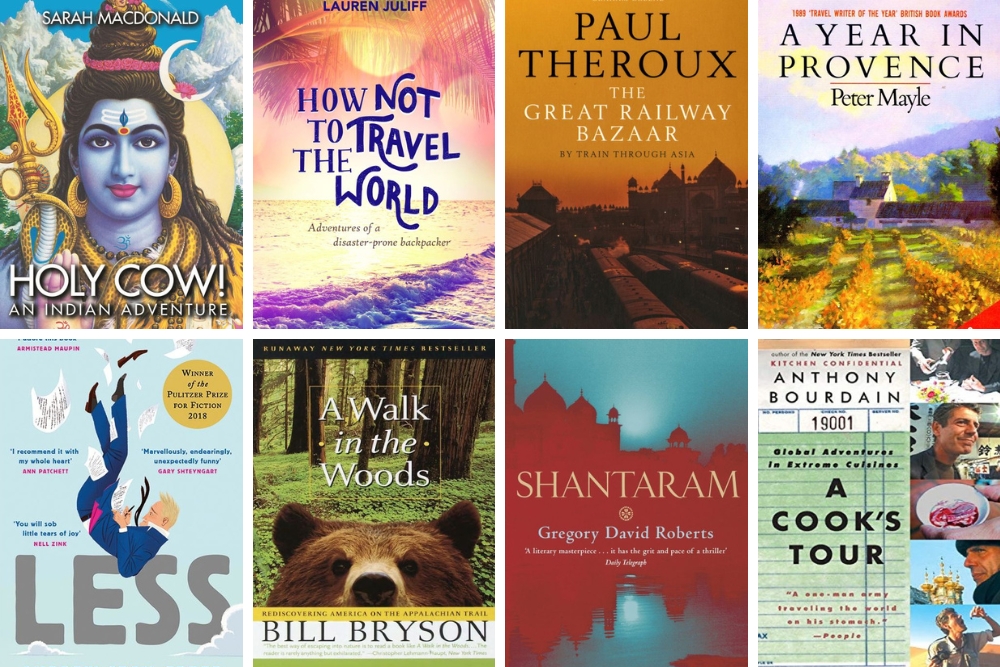
Shantaram, by Gregory David Roberts
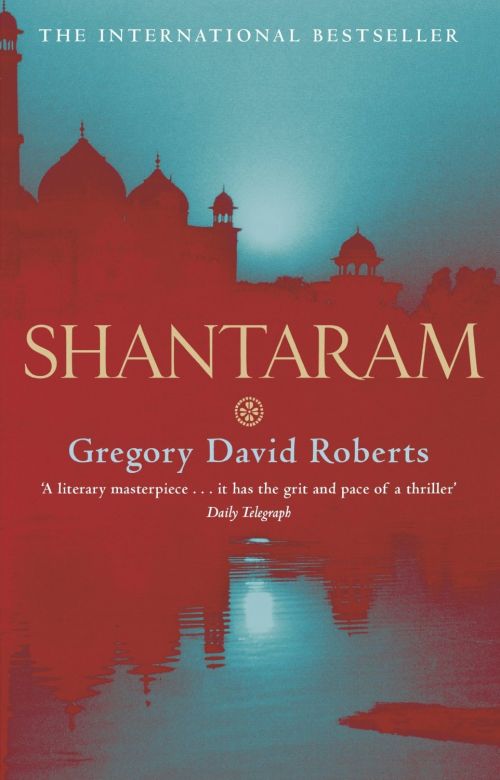
Shantaram is a novel by Gregory David Roberts that was first published in 2003. The action is set in the city of Mumbai (formerly Bombay), India, and tells the story of Lin, a man who has escaped from an Australian prison and has arrived in India looking for a new life.
The novel is a thrilling and captivating read, full of adventure, romance, and self-discovery. Lin is a complex and well-developed character, and the story is full of engaging and well-drawn supporting characters. Roberts’ writing is vivid and evocative, and he does an excellent job of bringing the city of Mumbai to life. The novel is also full of fascinating details about Indian culture and history, which adds depth and richness to the story.
One of the most impressive things about Shantaram is how Roberts balances the novel’s various elements. The novel is at once a love story, a crime story, and a spiritual journey, and Roberts manages to make all of these elements work together seamlessly. The novel’s pacing is spot on, with plenty of action and tension to keep the reader engaged.
Shantaram is a rewarding and enjoyable read. It is a vivid and compelling portrait of a fascinating city and its people and is full of engaging and well-developed characters. Anyone interested in India or adventure and romance stories will find much to enjoy in this novel.
The Great Railway Bazaar, by Paul Theroux
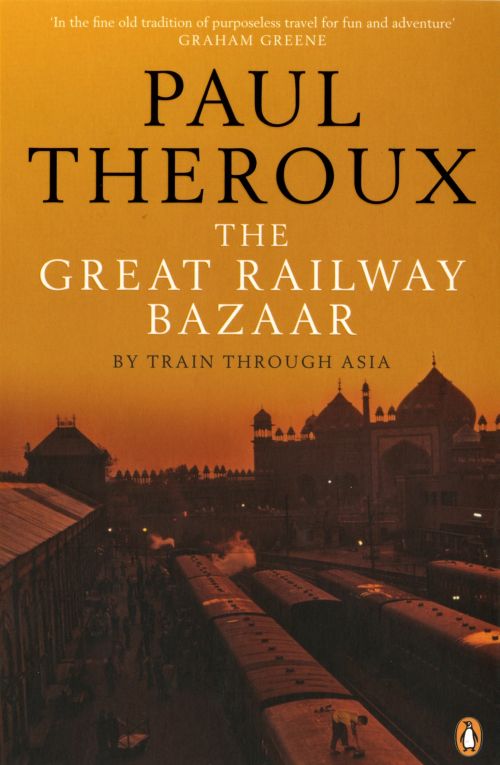
The Great Railway Bazaar is a travelogue by the acclaimed travel writer Paul Theroux that was first published in 1975. In the book, Theroux embarks on a journey by train from London to Tokyo, traveling through Europe, the Middle East, and Asia. Along the way, he reflects on the places he visits and the people he meets, offering a unique and often humorous perspective on the culture and customs of the countries he passes through.
One of the standout features of The Great Railway Bazaar is Theroux’s writing style. His prose is witty and engaging, and he has a talent for bringing his observations and experiences to life in vivid and evocative detail. The book is full of amusing and often surprising encounters, and Theroux’s dry sense of humor adds an extra layer of enjoyment to the narrative.
Another strength of the book is the way that it captures the sense of adventure and excitement that comes with traveling by train. Theroux’s descriptions of the various trains he rides on and the landscapes and cities he passes through are filled with a sense of wonder and discovery. The book is also full of exciting insights into the history and culture of the countries he visits, which helps to give the reader a more nuanced understanding of the places he writes about.
A Year in Provence, by Peter Mayle
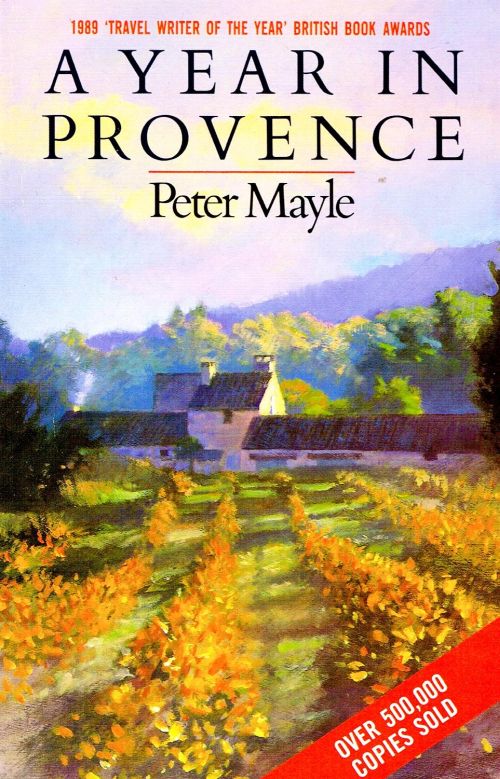
A Year in Provence is a memoir by Peter Mayle that was first published in 1989. The book chronicles Mayle’s experience of moving from England to the small village of Ménerbes in the Provence region of France and details the challenges and adventures he and his wife encounter as they adjust to life in a new country.
The book is full of humorous and often surprising observations about French culture and the quirks of village life, and Mayle’s wry wit and self-deprecating humor add an extra layer of enjoyment to the narrative. The book is also full of fascinating details about the history and culture of the Provence region, which helps to give the reader a deeper understanding of the place Mayle writes about.
Another strength of the book is the way that it captures the sense of adventure and discovery that comes with moving to a new country. Mayle’s descriptions of the various challenges and obstacles he and his wife encounter as they adjust to life in France are filled with excitement and wonder, and the reader cannot help but be drawn into their experiences. The book is also full of charming and well-developed French and English characters who add depth and richness to the story.
Seven years in Tibet, by Heinrich Harrer
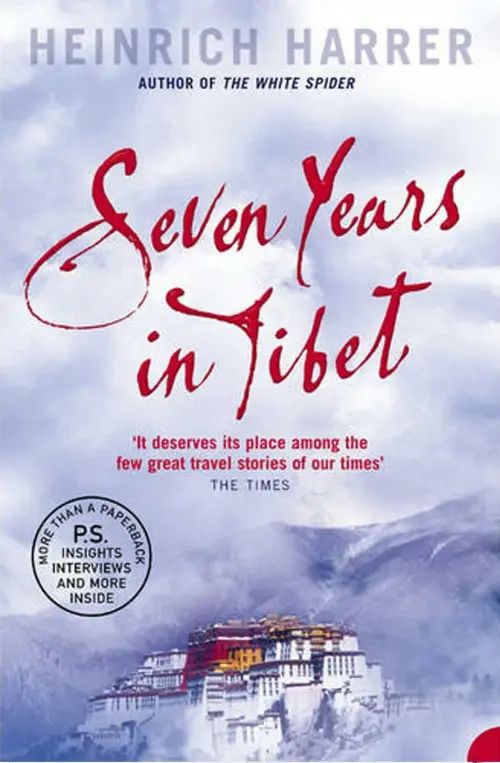
Seven Years in Tibet is a 1952 book written by Austrian mountaineer Heinrich Harrer on his experiences in Tibet between 1944 and 1951 during World War II, the interim period, and the Chinese People’s Liberation Army’s invasion of Tibet in 1950.
The book begins with Harrer’s experiences as a member of a team attempting to climb the Nanga Parbat mountain in the Himalayas. After a successful ascent, the team is forced to descend due to a storm, but Harrer and his climbing partner, Peter Aufschnaiter, become trapped in India due to the onset of World War II.
While in India, the two men are interned by the British government, but they eventually escape and make their way to Tibet. Once in Tibet, they are taken in by the Tibetan people and eventually come to the attention of the young Dalai Lama. Harrer becomes a close friend and mentor to the Dalai Lama, teaching him about the outside world and Western ways of thinking.
As the Chinese Army began to invade Tibet, Harrer helped the Dalai Lama and his entourage escape to safety in India. The book ends with Harrer’s reflections on his experiences in Tibet and his admiration for the Tibetan people and their culture.
One of the standout aspects of the book is its vivid descriptions of the Tibetan landscape and culture. Harrer’s love for Tibet and the Tibetan people shines through in his writing, and his admiration for their way of life is fantastic. He also does a good job of portraying the Dalai Lama as a complex and interesting character rather than just a one-dimensional spiritual leader.
Another strength of the book is its exploration of the effects of outside forces on Tibetan culture. Harrer is not afraid to criticize the Chinese invasion of Tibet and the destruction of Tibetan culture that it brings. Still, he also acknowledges how Western influence had already impacted Tibet before the invasion.
Holy Cow: An Indian Adventure, by Sarah Macdonald
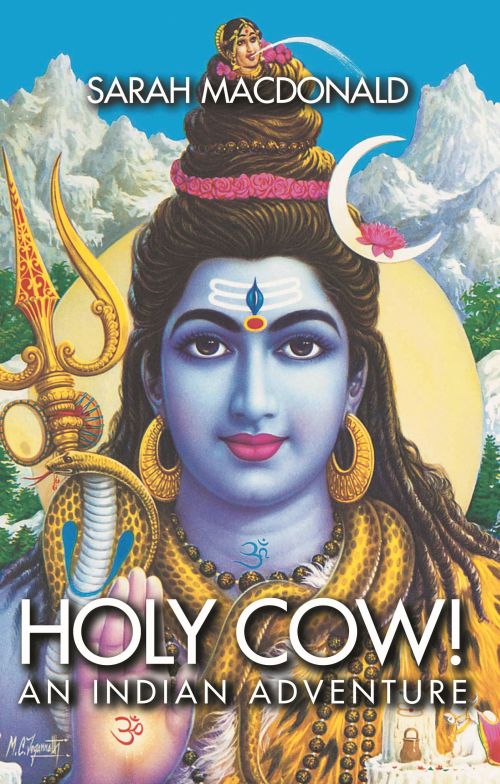
Holy Cow: An Indian Adventure is a 2003 book by Australian journalist Sarah Macdonald in which she chronicles her travels in India.
The book begins with Macdonald’s decision to leave her high-pressure job in Sydney and travel to India on a whim. Upon arriving in India, she is immediately struck by the sensory overload of the country, and she finds herself struggling to adjust to the sights, sounds, and smells of the bustling Indian cities.
As she travels across India, Macdonald encounters a wide variety of people and experiences, from holy men and scam artists to luxury hotels and filthy slums. She also grapples with her own issues, including her ambivalence about becoming a mother and her complicated relationship with her alcoholic father.
One of the standout features of Holy Cow is its vivid and evocative writing. Macdonald has a talent for bringing her experiences in India to life, and her descriptions of the country’s sights, sounds and smells are immersive and engaging. She also has a sharp eye for detail, and her observations about Indian culture and society are often astute and thought-provoking.
How Not to Travel the World, by Lauren Juliff
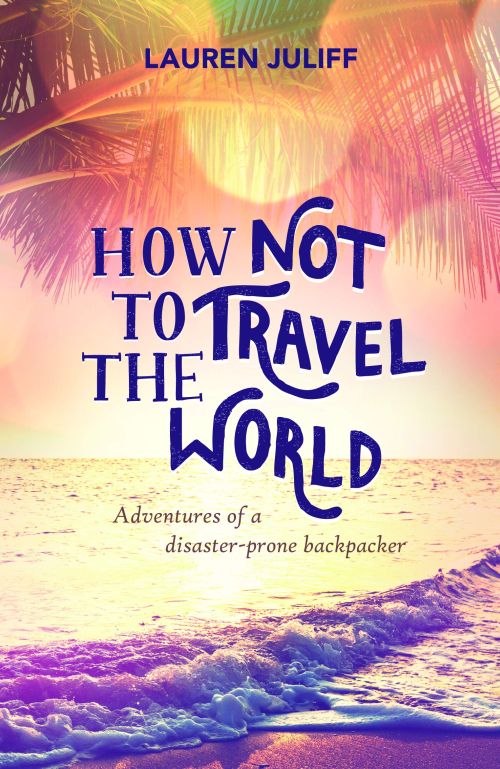
How Not to Travel the World is a 2013 book by British blogger Lauren Juliff in which she chronicles her misadventures and mishaps while traveling the world.
The book begins with Juliff’s decision to quit her job and travel the world, full of excitement and anticipation. However, as she embarks on her journey, she quickly discovers that travel is not always as glamorous or adventurous as it seems. She encounters a series of mishaps and disasters, from getting robbed to getting stranded in a foreign country, and she finds herself struggling to cope with the many challenges of long-term travel.
Despite the obstacles she faces, Juliff persists in her travels, and she eventually learns to embrace the chaos and uncertainty of the road. Along the way, she also learns valuable lessons about herself and the world, and she discovers that the most important thing is not to avoid mistakes but to learn from them and grow as a person.
One of the standout features of How Not to Travel the World is its humor and self-deprecation. Juliff is a talented storyteller, and she can find humor in even the most disastrous situations. She is also unafraid to laugh at herself, and many of the funniest moments in the book come from her own mistakes and mishaps.
Another strength of the book is its relatability. Juliff’s experiences will resonate with anyone who has ever traveled, and her struggles and triumphs will feel familiar to anyone who has ever ventured outside their comfort zone. The book is also full of practical advice and tips for travelers, making it a valuable resource for anyone planning a long-term trip.
Less, by Andrew Sean Greer
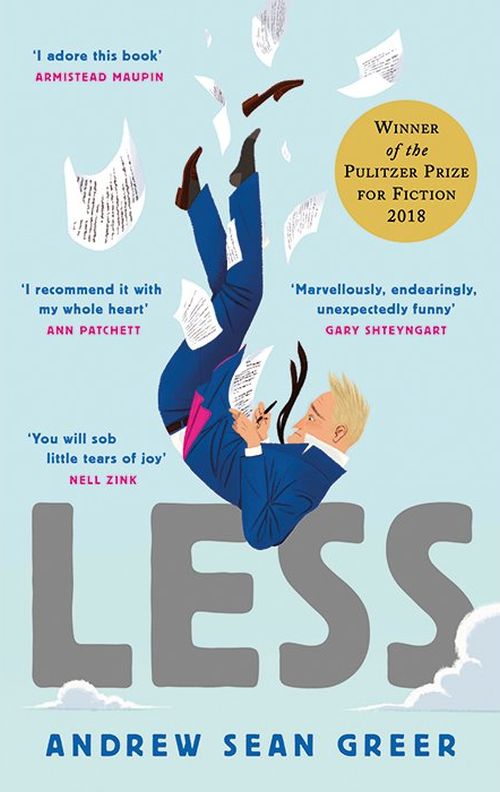
Less is a 2017 novel by American author Andrew Sean Greer. It tells the story of Arthur Less, a struggling novelist in his late forties who embarks on a worldwide journey to avoid attending his ex-boyfriend’s wedding.
As he travels from Paris to Mexico to Japan and beyond, Less grapples with his age, failed relationships, and uncertain future. He also encounters a series of eccentric and colorful characters, from a reclusive German author to a mysterious Japanese man.
Throughout his journey, Less is forced to confront the truths about himself and his past, and he ultimately learns to let go of his fears and insecurities to embrace life and find happiness.
One of the standout features of Less is its clever and insightful writing. Greer is a skilled wordsmith and has a talent for creating vivid and evocative descriptions of the places and people that Less encounters on his journey. He is also adept at exploring complex and nuanced emotions, and he does an excellent job of depicting Less’s inner turmoil and growth throughout the novel.
Another strength of the book is its well-developed and engaging characters. In addition to Less, the novel features a cast of rich and fascinating characters, each of whom has their own unique stories and quirks. From the reclusive German author to the eccentric young man who accompanies Less on his travels, these characters add depth and complexity to the story and help to make the novel feel vibrant.
Rough magic, by Lara Prior-Palmer
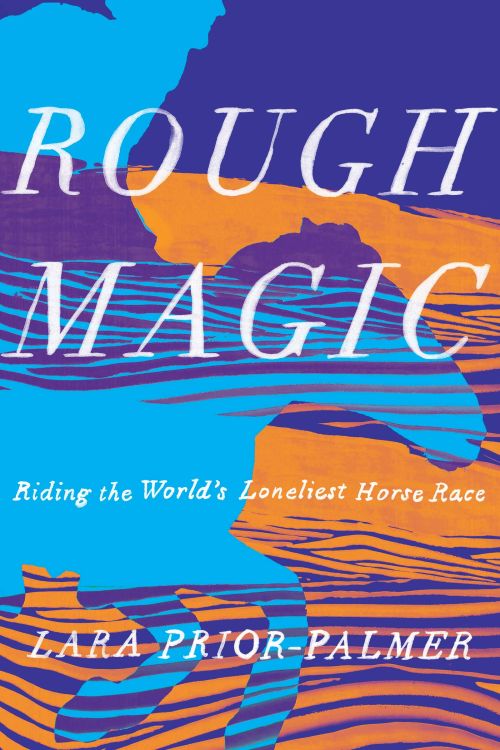
Rough Magic is a captivating and beautifully written memoir by Lara Prior-Palmer. In the book, Prior-Palmer tells the story of her unexpected victory in the 2013 Mongol Derby, a grueling 1,000-kilometer horse race across the Mongolian steppe.
Prior-Palmer’s writing is engaging and evocative, bringing Mongolia’s vast and unforgiving landscape to life. She also writes candidly and openly about her experiences as a young woman navigating the challenges of the race, from dealing with difficult horses to facing her own physical and emotional limitations.
One of the most striking aspects of the book is Prior-Palmer’s deep love and admiration for the Mongolian people and their culture. She writes with great respect and affection about the local herders and trainers who help her along the way, and her descriptions of their way of life are both fascinating and moving.
Overall, Rough Magic is a thrilling and inspiring read that offers a unique and intimate look at one of the world’s most remote and rugged environments. Whether you’re a fan of adventure writing or just looking for a remarkable memoir, this book is worth checking out.
A walk in the woods, by Bill Bryson
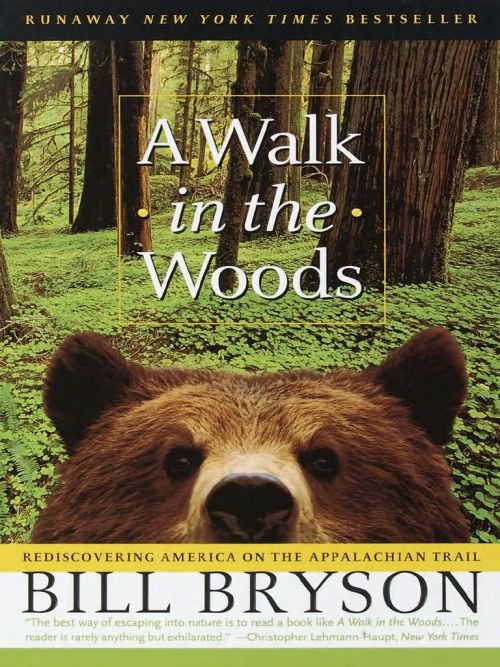
A Walk in the Woods is a humorous and entertaining memoir by bestselling author Bill Bryson. In the book, Bryson chronicles his attempt to hike the entire 2,100-mile Appalachian Trail from Georgia to Maine.
Bryson’s writing is witty and engaging, bringing a unique perspective to the trials and tribulations of long-distance hiking. He also writes with great insight and humor about the natural world and the history of the Appalachian Trail, offering a fascinating look at the people and places he encounters along the way.
One of the book’s highlights is Bryson’s descriptions of his fellow hikers, from the eccentric “Papa Smurf” to the overbearing “Mary Ellen.” He also writes candidly about the challenges of hiking the trail, including the rugged terrain, the unpredictable weather, and his struggles.
A Walk in the Woods is a delightful and entertaining read that will appeal to fans of travel writing, nature writing, and memoirs. Whether you’re a seasoned hiker or just someone who enjoys a good adventure story, this book is sure to entertain and inspire.
A Cook’s Tour: Global Adventures in Extreme Cuisines, by Anthony Bourdain
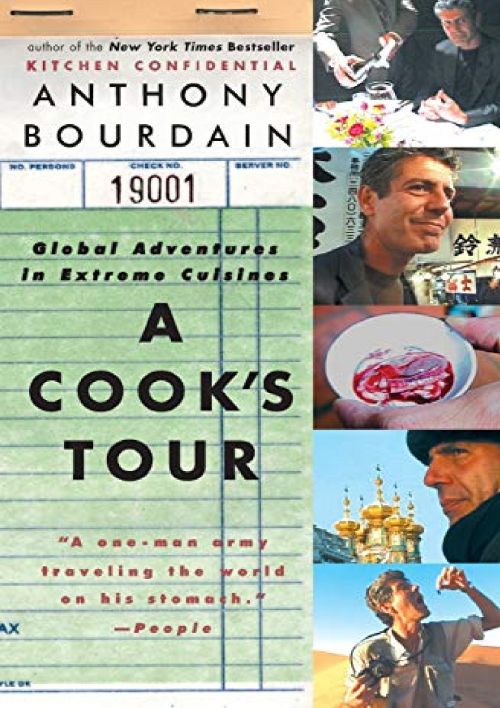
A Cook’s Tour: Global Adventures in Extreme Cuisines is a fascinating and eye-opening book by the late Anthony Bourdain. In the book, Bourdain takes readers on a culinary journey to some of the most remote and exotic corners of the world, from the back alleys of Saigon to the markets of Mexico City.
Bourdain’s writing is engaging and vivid, and he brings a unique and often humorous perspective to the food and culture of the places he visits. He also writes candidly and openly about his experiences as a chef and traveler, and his passion for food and adventure shines through on every page.
One of the standout features of the book is Bourdain’s willingness to try just about anything, from exotic meats and delicacies to local specialties and street food. His descriptions of the food he eats are mouthwatering and sometimes stomach-churning, but they also offer a unique and personal look at the people and cultures he encounters along the way.
Conclusion
In conclusion, the best travel books from the list above offer readers a chance to escape the daily grind and explore the world from the comfort of their own homes. Also, travel writers will find inspiration and learn from the different authors’ writing styles to enrich their own texts. These books offer something for everyone, from thrilling adventure tales to thought-provoking reflections on culture and society. Bref, the books on this list are sure to captivate and inspire. So why not pick up one of these titles and start your own journey of discovery today?
Pin it!
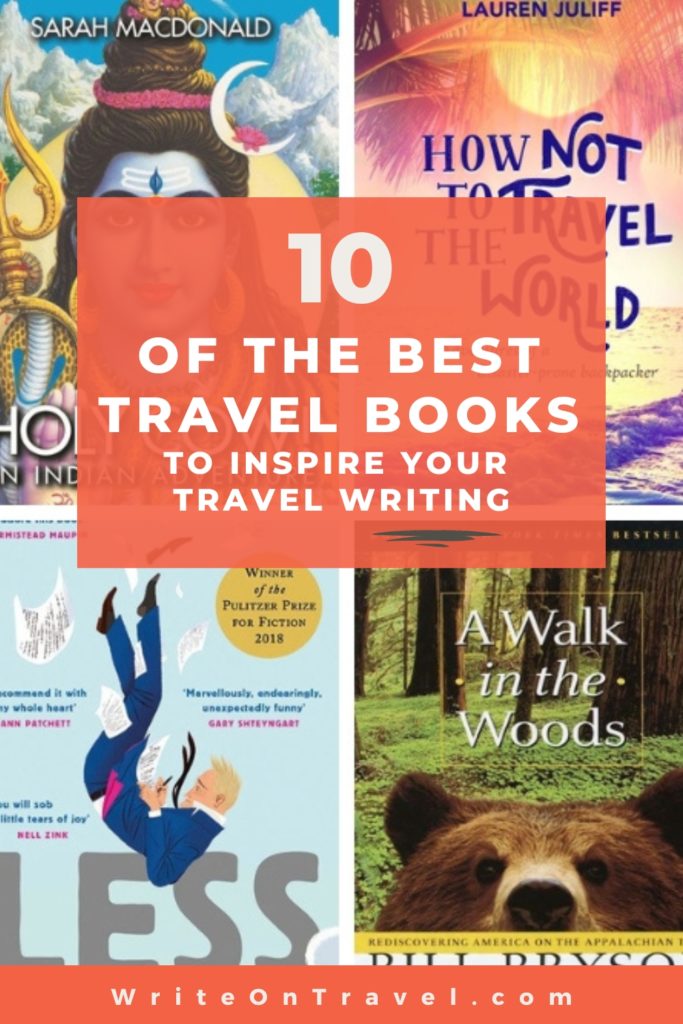
You may also like: How to submit travel stories to magazines or websites